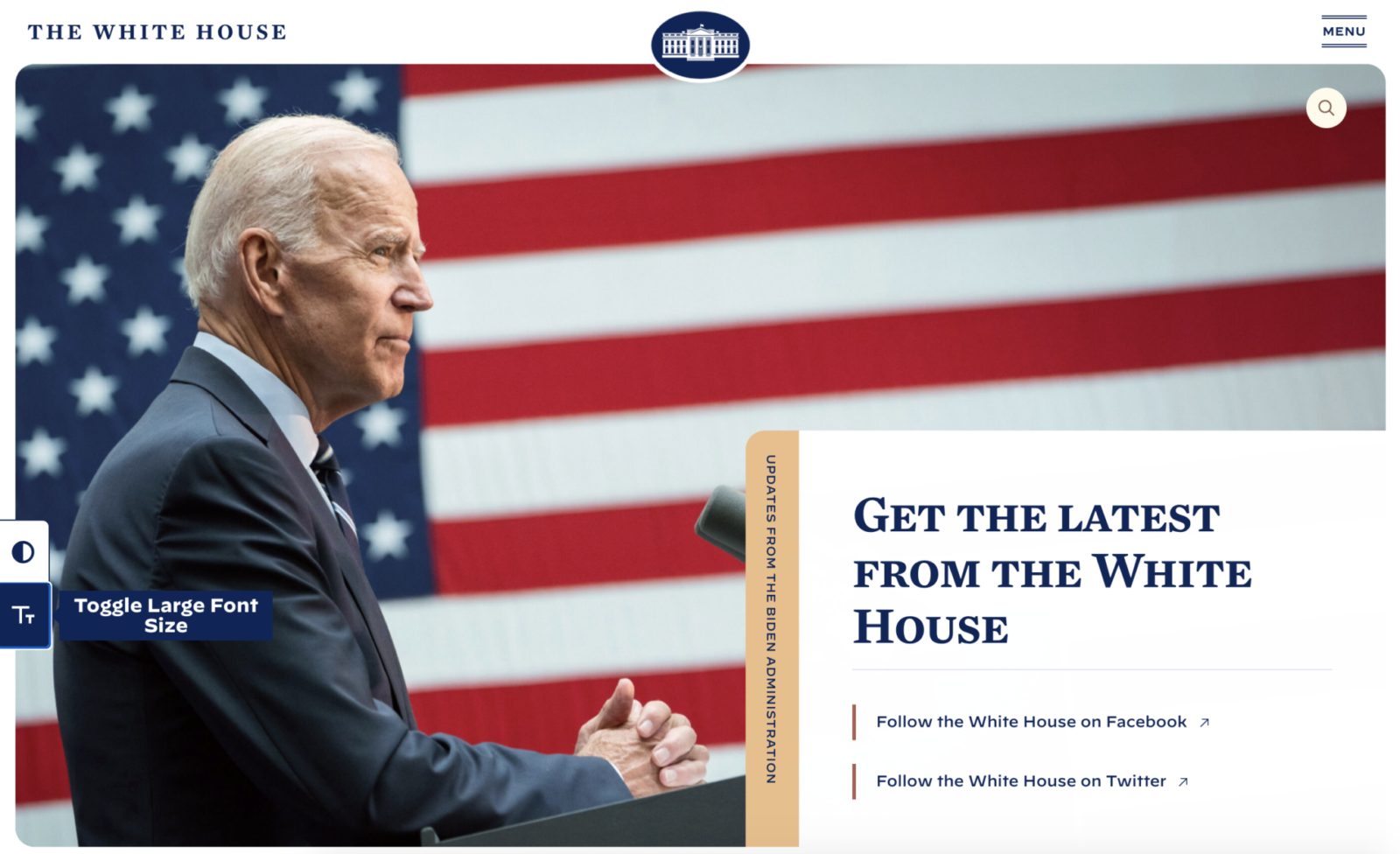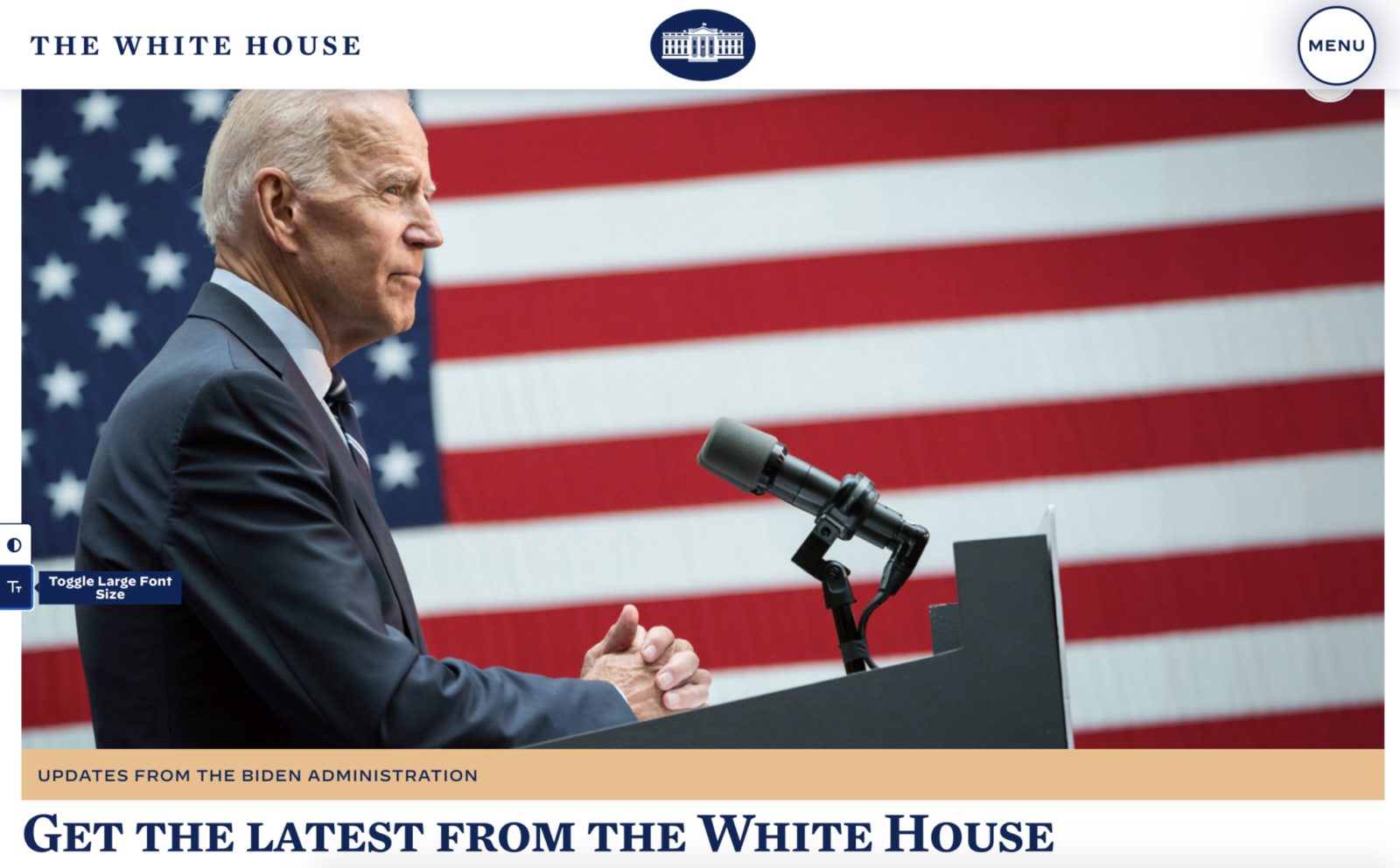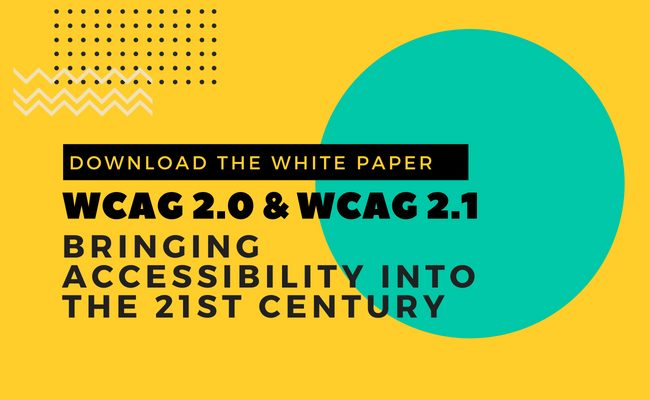How the New White House Administration is Prioritizing Accessibility
Under President Joe Biden’s administration, it appears accessibility has become an important initiative.
Since (and even before) Mr. Biden’s inauguration, he and his team have made a point to make all communications accessible to a wider audience – particularly to those who are deaf or hard of hearing and/or have vision loss. During his campaign, Mr. Biden’s events featured captions, interpreters, and an option to access live audio descriptions, according to USA Today.
While substantial progress regarding accessibility has been made already – including new features on the White House website and an official accessibility statement available in the footer of all of its website pages – the administration acknowledged there is still work to be done, pledging these moves are part of “ongoing accessibility effort works towards conforming to the Web Content Accessibility Guidelines (WCAG) version 2.1, level AA criteria.”
So, what exactly has this new administration done with regard to accessibility, why does it matter, and what might these initiatives mean for you and/or your organization?
What’s Changed
Official White House communications have been delivered and presented in a way that allows viewers and website visitors to view the information they need more accessibility. Specifically, changes have been noticed on the official whitehouse.gov website, as well as White House press briefings.
Website Changes
Specifically, TechCrunch reports the White House website now has a dark mode and a large text toggle for website visitors with vision loss or strained eyes.
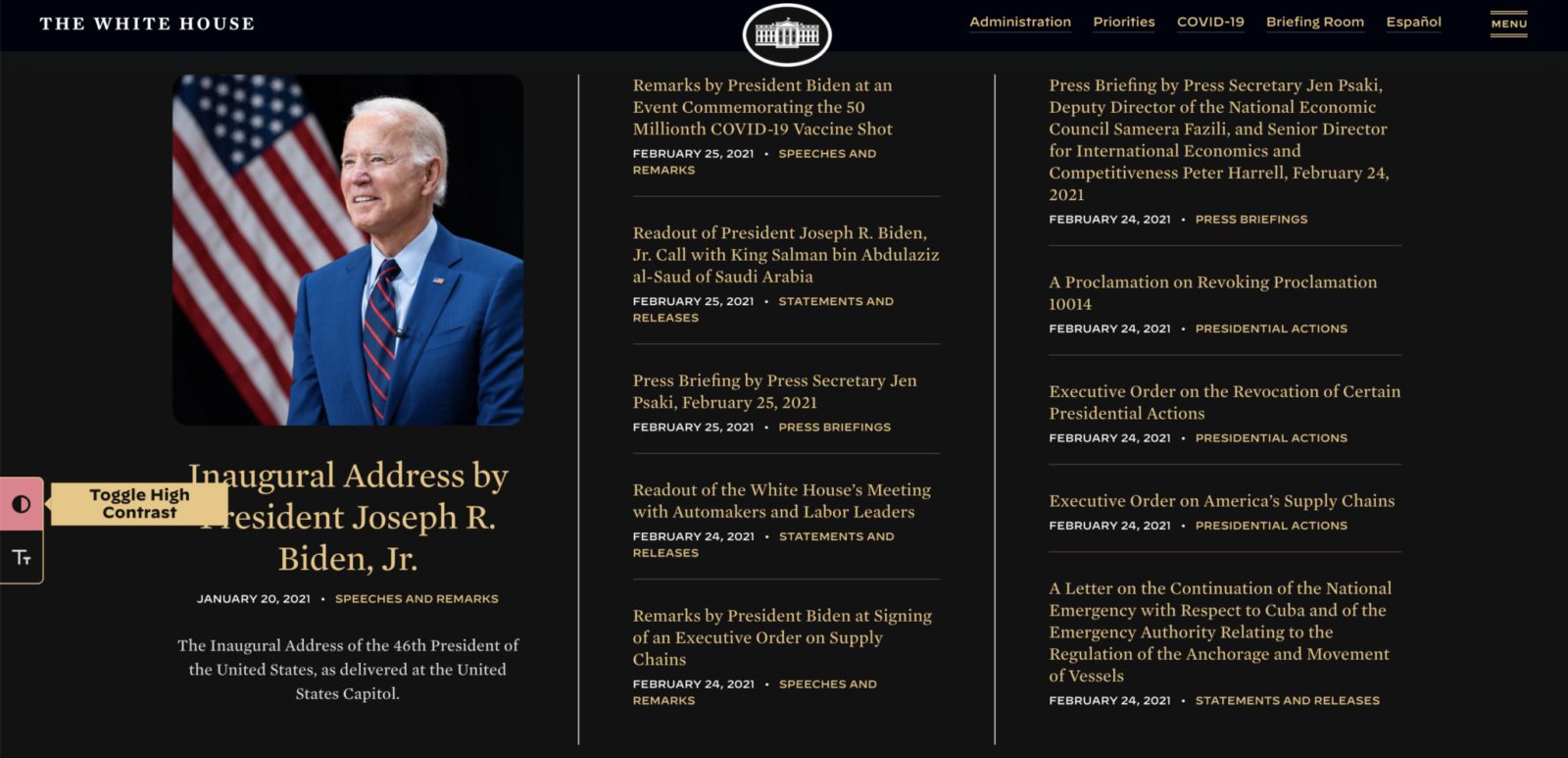
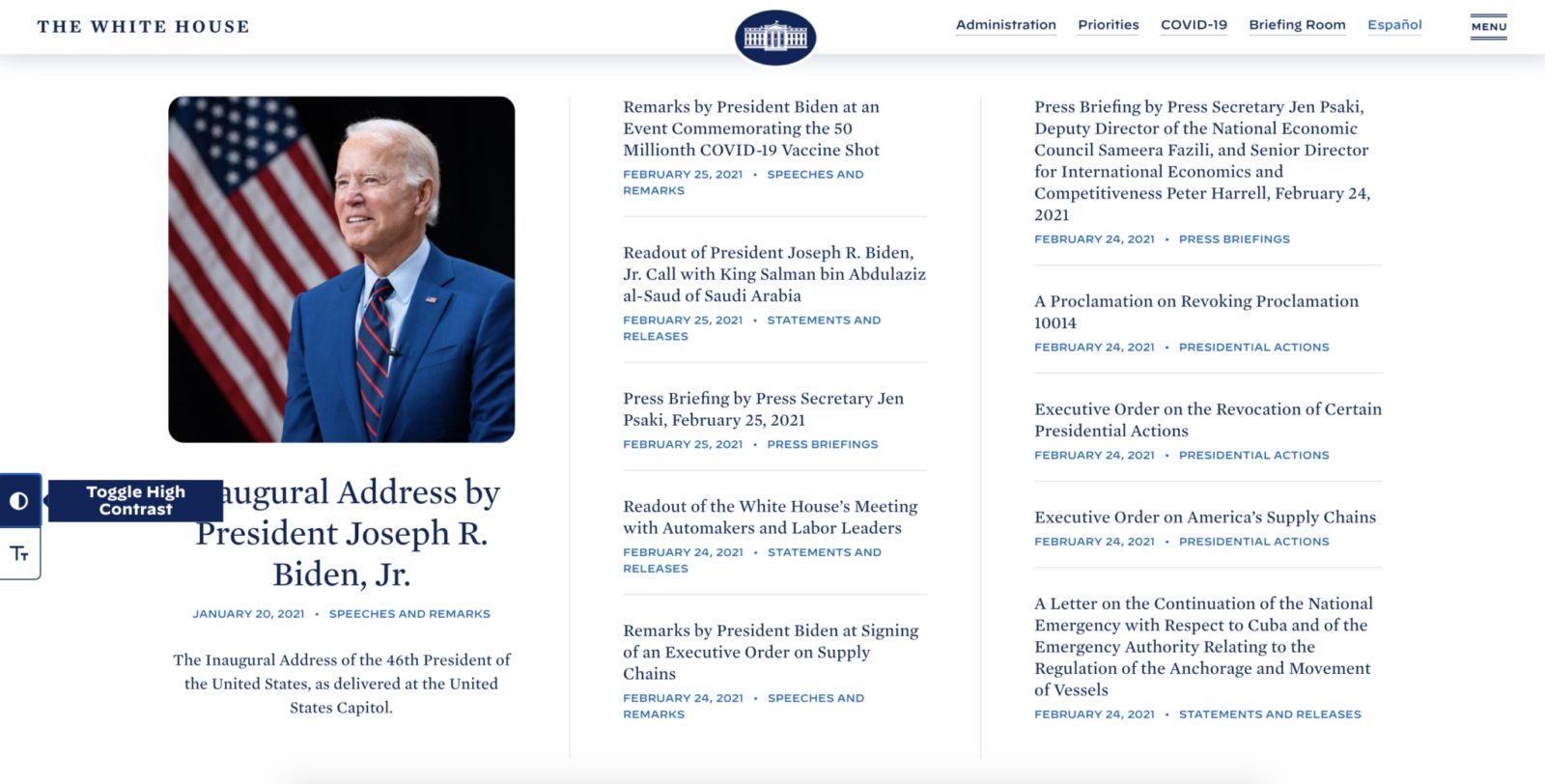
TechCrunch writer Devin Coldewet also pointed out the presence of captions and alt text with images on the site. Alt text has been utilized by marketers and website developers to help images (and the pages on which they appear) rank for targeted keywords, but from an accessibility standpoint, this text describes an image’s contents to those who utilize screen readers.
White House Press Briefings
According to White House Press Secretary Jen Psaki, Mr. Biden’s administration will be the first in history to include American Sign Language (ASL) interpretations at all of the White House’s daily press briefings. ASL interpreters are equipped to convey the tone and intricacies of the people they are interpreting, helping those who have difficulty hearing better understand the intended message.
The announcement was made during the January 25th press briefing (which can be viewed below), where the very first point made by Press Secretary Psaki in the announcement is the inclusion of ASL interpreters moving forward.
According to USA Today, ASL interpreters can only be viewed through White House media channels, meaning interpretation is not widely available on other platforms such as television news. However, advocates are still in agreement that this move is a step in the right direction when it comes to accessibility.
Why These Changes Matter
Press Secretary Psaki states in the above video that “The President is committed to building an America that is more inclusive, more just, and more accessible for every American – including Americans with disabilities and their families.”
Conversely, the previous White House administration faced criticism for failing to meet certain expectations or requirements pertaining to accessibility. Notably it was sued by the National Association of the Deaf for not having American Sign Language interpreters at briefings on the COVID-19 pandemic.
However, aside from avoiding accessibility lawsuits, the current administration is likely focusing on these accessibility measures for the simple fact that millions of Americans are deaf or hard of hearing, or have some degree of vision loss. These measures make it easier (or in some cases, possible) for these Americans to access official White House information.
For example:
- 60% of Americans experience symptoms related to digital eye strain (or Computer Vision Syndrome). While the science has poked some holes in the believed benefits of dark mode, some do find it to be easier on their eyes and cause less discomfort.
- More than 8 million Americans have vision loss, which could require the use of a screen reader or the option for larger font size in order to read content online.
- 5% of the world’s population has disabled hearing loss, making audio or audio-only content difficult – if not impossible – to consume.
Given the millions of people who listen to, read the words of, or watch the President every single day, making his messages accessible across multiple formats is an essential step to ensuring the words of his office are lost on as few of his constituents as possible.
Mr. Biden’s administration has pledged that the accessibility work to date is part of an ongoing process, suggesting that his staff will continue to work to close the accessibility gap.
Not only does this decision help the administration’s communications team meet accessibility standards and disseminate information to more people, it’s also an instance of leading by example for the country and the world at large.
Every viewer of a press briefing on White House media channels will see an ASL interpreter. Every visitor to the White House website will be greeted with options to make the site visually better for those who need such a change, and will see a link to the office’s accessibility statement in the website footer. The site was visited an estimated 29 million times in January – according to SimilarWeb – meaning millions are seeing the features that help makes the office’s communications more accessible to those who need it.
What These Changes Could Mean For Your Organization
Despite WCAG and ADA standards, countless websites remain inaccessible. One report, for instance, found that four out of five news sites have accessibility issues. The accessibility efforts on the website and in video content for the United States Executive Branch could result in more conversations around and improvements to accessibility in media and messaging.
For example, while your organization or your small business may not be able to afford its own ASL interpreter, seeing one in an official White House press briefing might remind you to consider another solution like live automatic captioning to make video content like webinars or live streams accessible to those who require or prefer the use of captions.
The example has been set – and it’s up to organizations throughout the country to follow it and make their videos, websites, and content more accessible.
—
Download the White Paper to Learn More About Bringing Web Accessibility Into the 21st Century



